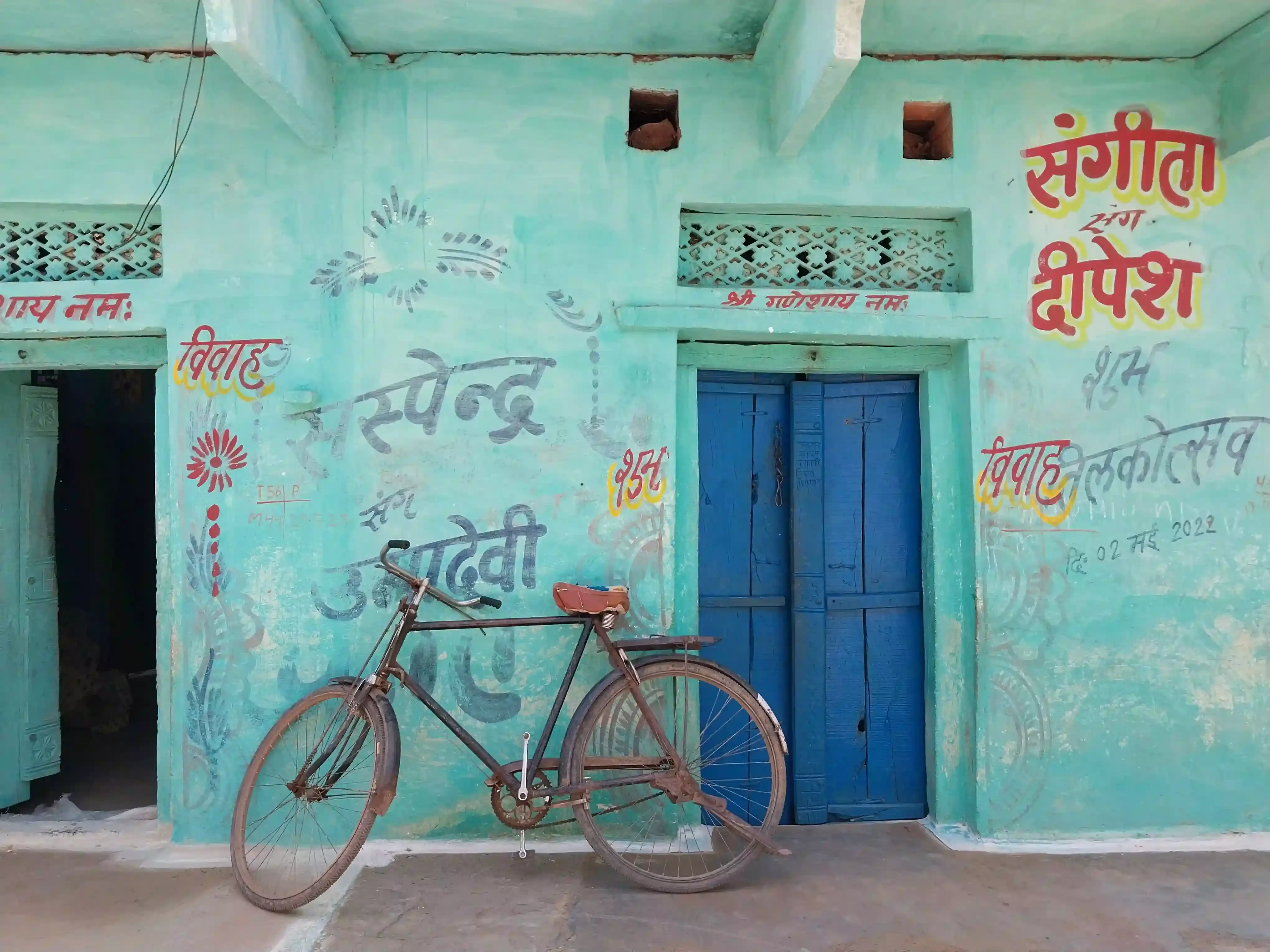Home Is Where The Art Is
Bundelkhand’s houses bear testimony to region’s uniqueness
In the harsh summer season when temperatures cross 40 degrees Celsius and hand pumps often run dry, Bundelkhand’s houses stand out with their vivid colours which calms the mind. White, pink, a soothing light shade of blue is most commonly seen, pastel green, and even bright hues like orange and yellow are popular.
The architectural style of the houses is from the bygone days when artificial cooling techniques were unheard of, said Rajlakshmi Dubey, a conservation architect, who worked in this region for over a year in 2020-21, and was once associated with Haritika, a non-profit.
As the villages of Bundelkhand get extremely hot in the summers, these techniques are used to reduce excessive heat inside. “The house planning is based on traditional methods and uses passive cooling techniques.
“The courtyards are at the back or in the middle of the houses away from the harsh sun rays. Limestone powder or ‘chuna’ is liberally applied on the walls and colours such as blue and green help soothe the mind,” Dubey said.
Rajesh Ahirwar, who works for non-profit Manjari Foundation, said colours have been traditionally used to paint the houses and ‘chuna’ is liberally applied as it is cheap. During wedding ceremonies names of couples are written and attractive designs created on the walls as part of the Chiteri art famous in the region. In many houses, the image of the elephant god Ganesha is seen above wooden doors.
Even the doors are colourful and attractive, symbolising the regal life of kings and queens. “People have somehow adopted the grand culture. Some houses are only made of bricks which are economical. These are used to shelter animals and store fodder.”
Ahirwar said that earlier people used cow dung on the mud walls of their houses which prevented insects from entering and kept the houses cool in summers and warm in winters. It was connected to nature. These days both ‘kutcha’ and ‘pucca’ houses are seen but the use of cement is less and bricks are usually preferred.
Dubey explained that as Bundelkhand is a hot region, mostly blue colour mixed with ‘chuna’ is used on walls. It creates an instant cooling effect. “In old times, ‘chuna’ plaster was used on the walls and terraces. These days many people are adapting to concrete as it is low on investment and maintenance.”
Devendra Parmer, a resident of Karma Sanhar village in Tikamgarh, which comes in Bundelkhand region said that mud is always used on the walls to keep temperatures down and then plaster is used. First, bricks are used for the structures, then mud is applied and after that limestone is used.
“When only mud houses were made, ‘khaprail’ tiles were used in the roofs to prevent the walls from getting wet in the rains. Now, many people are using cement. Pradhan Mantri Awas Yojana houses are made of cement. But houses made of black mud look beautiful and are built without bricks,” Parmer said.
DEEPANWITA GITA NIYOGI is an independent writer. All Photographs by Deepanwita Gita Niyogi.





